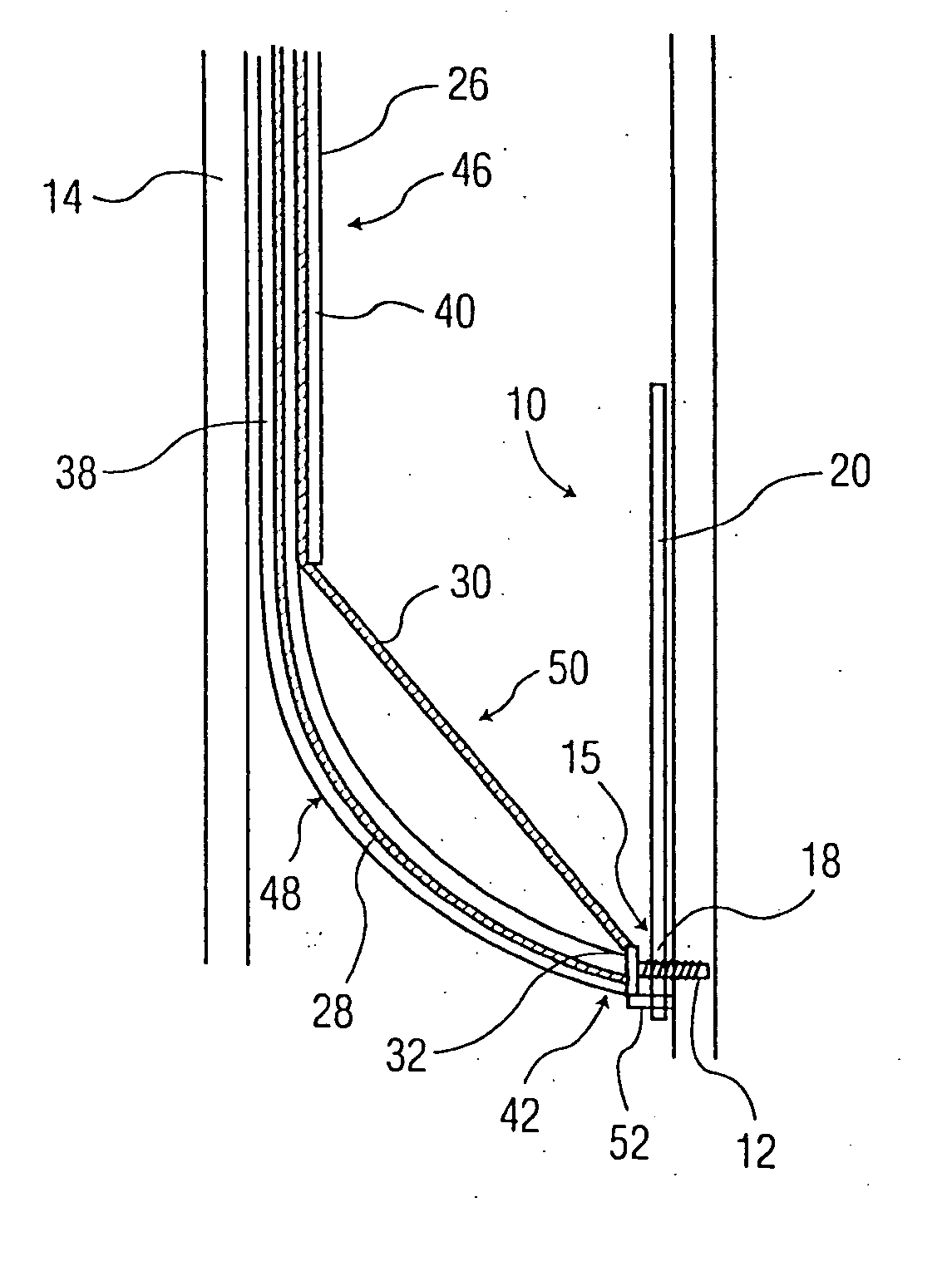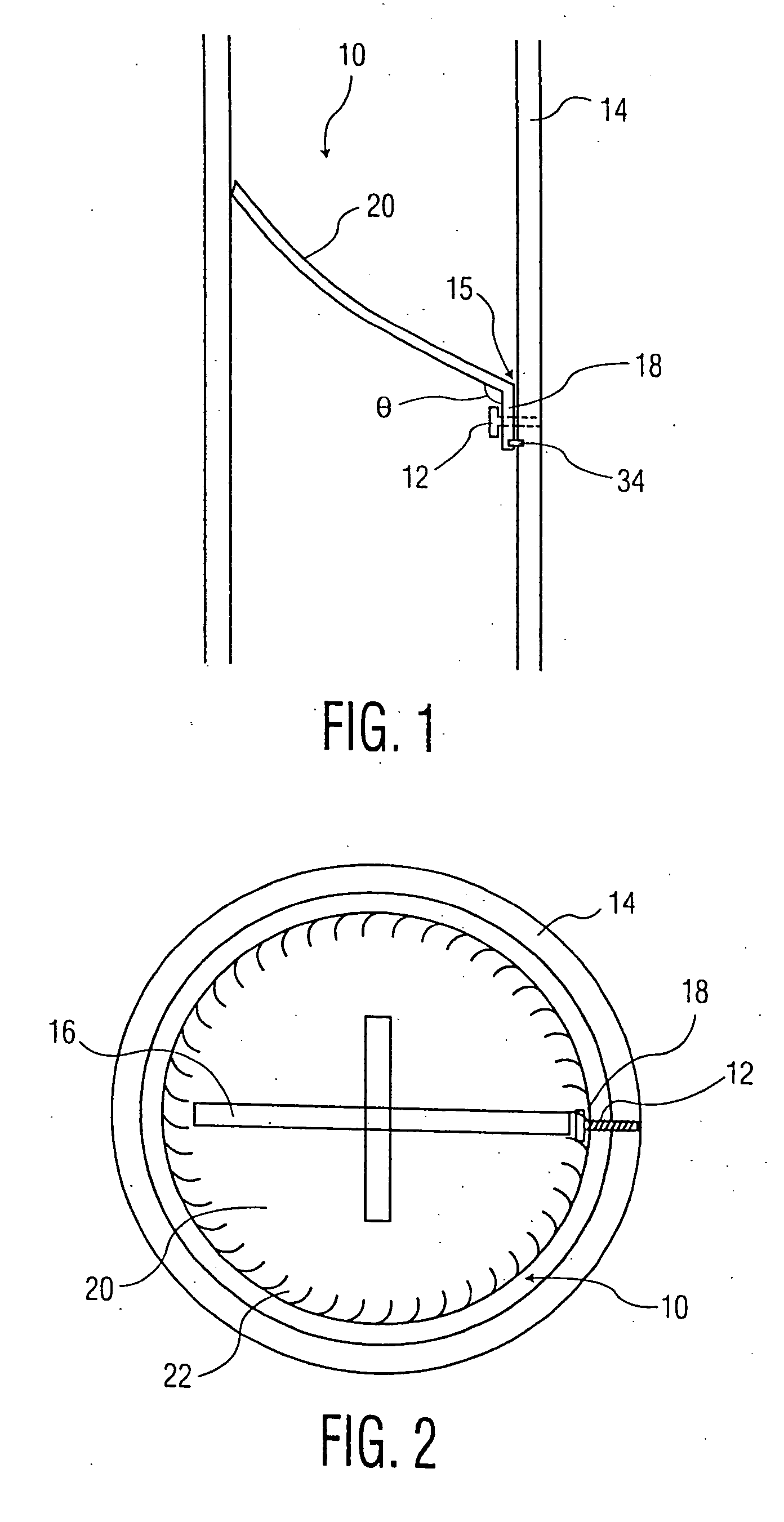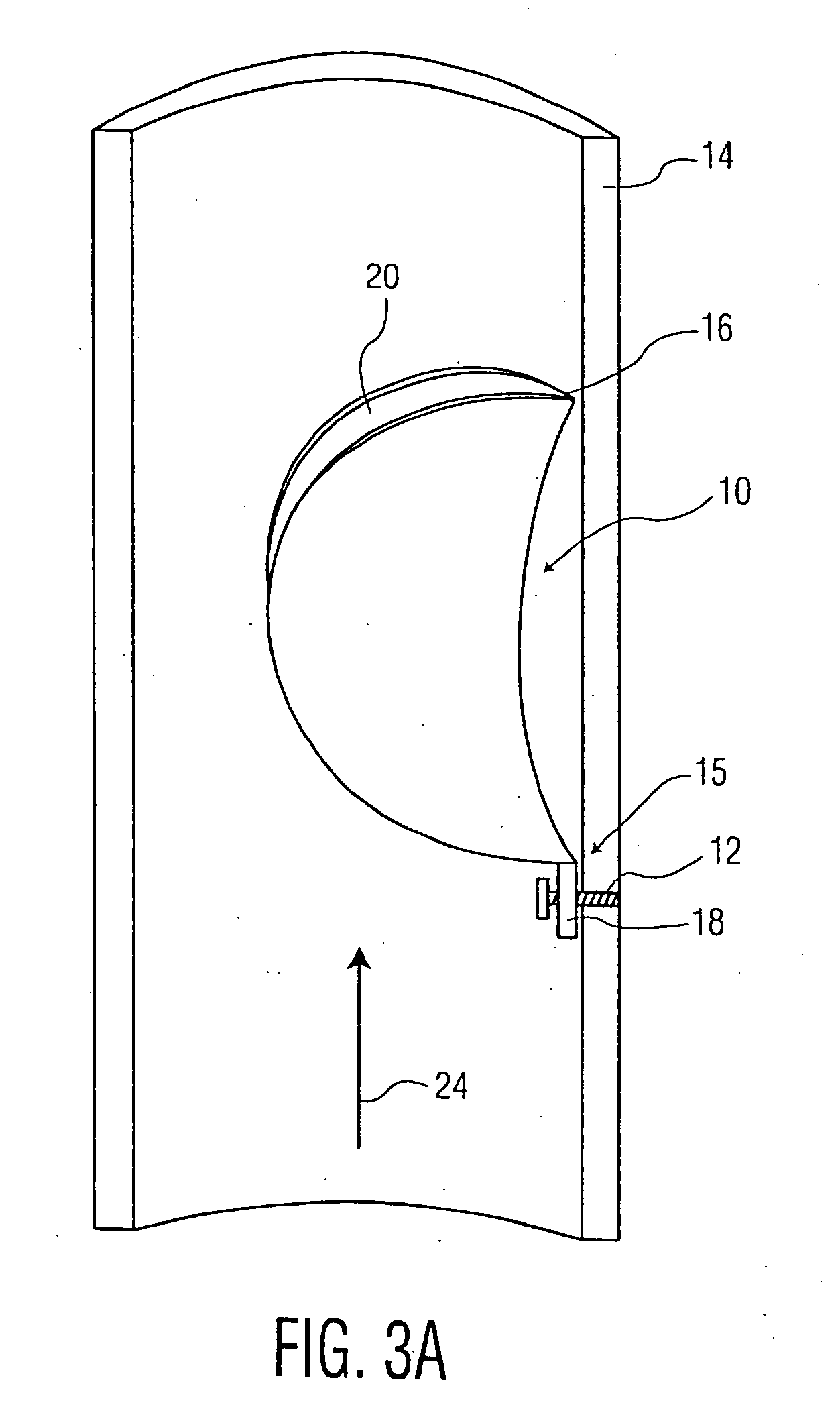Implantable valve system
a valve system and implantable technology, applied in the field of implantable valve systems, can solve the problems of reducing the effective orifice area of the valve, irritating a large amount of the venous wall, causing trauma to the wall of the vein, etc., and achieving the effect of preventing back flow
- Summary
- Abstract
- Description
- Claims
- Application Information
AI Technical Summary
Benefits of technology
Problems solved by technology
Method used
Image
Examples
Embodiment Construction
[0037]FIG. 1 illustrates a valve, identified generally as 10. In a preferred embodiment, the valve 10 is a venous valve for placement within a vein. The valve 10 can include a valve element 20 and a base 18, where the valve element or leaflet 20 is connected to the base 18 by a movable joint such as a hinge 15.
[0038] The valve 10 can be attached within a vessel having a vessel wall 14. The valve 10 can be attached to the vessel wall 14 by a tissue connector 12 which can include a pin, a screw or a staple, for example. The connector 12 can connect the valve 10 by its base 18 to the vessel wall 14. When the connector 12 is placed into the vessel wall 14, only a small portion of the connector 12 contacts the endothelium of the vessel wall 14 and the blood within the vessel. With such a configuration of the connector 12, there is less trauma to the wall 14 compared to the use of a stent, for example.
[0039] The valve 10 can also include a second connector 34. The second connector 34 ca...
PUM
 Login to View More
Login to View More Abstract
Description
Claims
Application Information
 Login to View More
Login to View More - R&D
- Intellectual Property
- Life Sciences
- Materials
- Tech Scout
- Unparalleled Data Quality
- Higher Quality Content
- 60% Fewer Hallucinations
Browse by: Latest US Patents, China's latest patents, Technical Efficacy Thesaurus, Application Domain, Technology Topic, Popular Technical Reports.
© 2025 PatSnap. All rights reserved.Legal|Privacy policy|Modern Slavery Act Transparency Statement|Sitemap|About US| Contact US: help@patsnap.com



